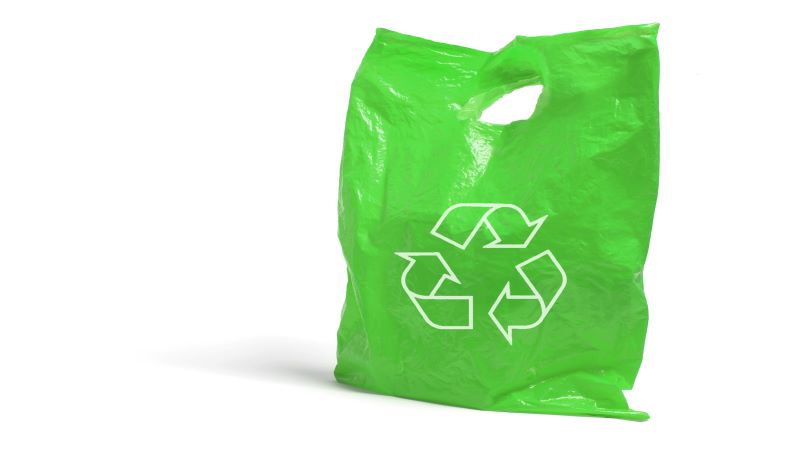This website uses cookies so that we can provide you with the best user experience possible. Cookie information is stored in your browser and performs functions such as recognising you when you return to our website and helping our team to understand which sections of the website you find most interesting and useful.
Euroconsumers analysis finds reusable plastic shopping bags have lower eco footprint

What’s the alternative to the single use plastic bag?
The humble shopping bag has become an everyday emblem of our fight against plastic waste and a target of regulation. Some countries across the world have introduced full or partial bans on plastic bags, whilst in Europe, higher pricing is used as a disincentive. Now consumers face an array of options for carrying home their shopping, from cotton or hessian tote bags complete with green slogans to recycled plastic bags or even small trolleys to
transport bigger loads home. But it is not always easy to choose the most environmentally sound option, and so this new Euroconsumers study tried to find out which was best.
The new study from Test-achats/Test Ankoop, OCU, Altroconsumo and Deco Proteste tested the ecological footprint of 96 different types of shopping bags, using a technique called ‘life cycle analysis’. Life cycle analysis is a very useful tool for getting a full picture of all of the resources that go into making, shipping, using and disposing of a product. In the case of shopping bags, it considered the extraction of the raw materials that make the bag, the manufacturing process which might include dyes and inks, the transportation involved in getting the product into shops, and the water and energy used to create the bag. All of these elements are then measured to give a rating for their ecological impact over their entire life.
As well as this lifecycle rating, each bag was given a score for how it performed in the test scenario of carrying 10kg of produce. The rating and the test score helped identify the best performing (or ‘least worst’) option. Once the best performer was identified, the testing team
calculated how many times the other types of bag would have to be used to have an equally small footprint score.
The results of the life cycle analysis of shopping bags
Using the life cycle analysis and comparative test revealed what was perhaps an unexpected result: the reusable plastic bag (LDPE) sold at supermarket checkouts came out as the most environmentally friendly option, as one to two uses (depending on whether or not it contains recycled materials) were enough to pay for its environmental impact. The reusable, compostable plastic bag was close behind as two shopping trips paid for its environmental
impact. But how did the other bags and containers tested measure up?
- Lightweight, foldable polyester bag: if it is made of recycled plastic, then it would take two uses to do better than LDPE.
- Sturdy polypropylene bag with strong handles: three to four uses are enough to have a lesser impact than the LDPE plastic leader.
- Paper bags: need to be used eight times to get a better performance than LDPE bags.
- Fabric bags: bags made from jute need to be used between 36 – 68 times to beat the leading LDPE option, and due to the water and energy used in production, cotton bags need to be used just over 100 times.
- Organic cotton bags: have an even a higher impact because its extensive cultivation requires more land, meaning that it would need to be used 154 times to have less impact than an LDPE bag.
- Wheeled trolley: the metal and plastic components of the trolley make its footprint much heavier to the point that it has to be used for seven years, twice a week to have less of an impact than LPDE. However, context is key, trolleys are mostly used by people who shop on foot and not by car, which means they are dramatically reducing their carbon footprint in other ways.
These results will be surprising for consumers who might automatically consider fabrics to be a better option over plastic, but as with many sustainable consumption choices it is all about context – which can make simple messaging and advice hard. For instance, reusable textile bags are not bad per se, but must be reused many times over in order to have a positive
impact. And, if more bags were produced in Europe and not shipped from Asia as is common now, their energy footprint could drop by up to 90%.
Best practice for communicating eco-bag choices
What the study shows is the importance of basing policies and communication strategies on scientific evidence when deciding which environmental options to promote. For now the advice is to:
- Use the bags you already have until they fall apart and then recycle them
- If you’re at the checkout and you forgot your bags at home, opt for bags made of reusable LDPE plastic bags, which are the least worst.
Find out more about the studies in each country:
- Belgium (Test-Achats/Test-Ankoop) https://www.test-achats.be/maison-energie/environnement/dossier/sacshopping
- Spain (OCU): https://www.ocu.org/consumo-familia/consumo-colaborativo/noticias/bolsas-de-supermercado
- Portugal (Deco Proteste): https://www.deco.proteste.pt/casa-energia/consumo-sustentavel/noticias/sacos-compras-qual-opcao-mais-amiga-ambiente


